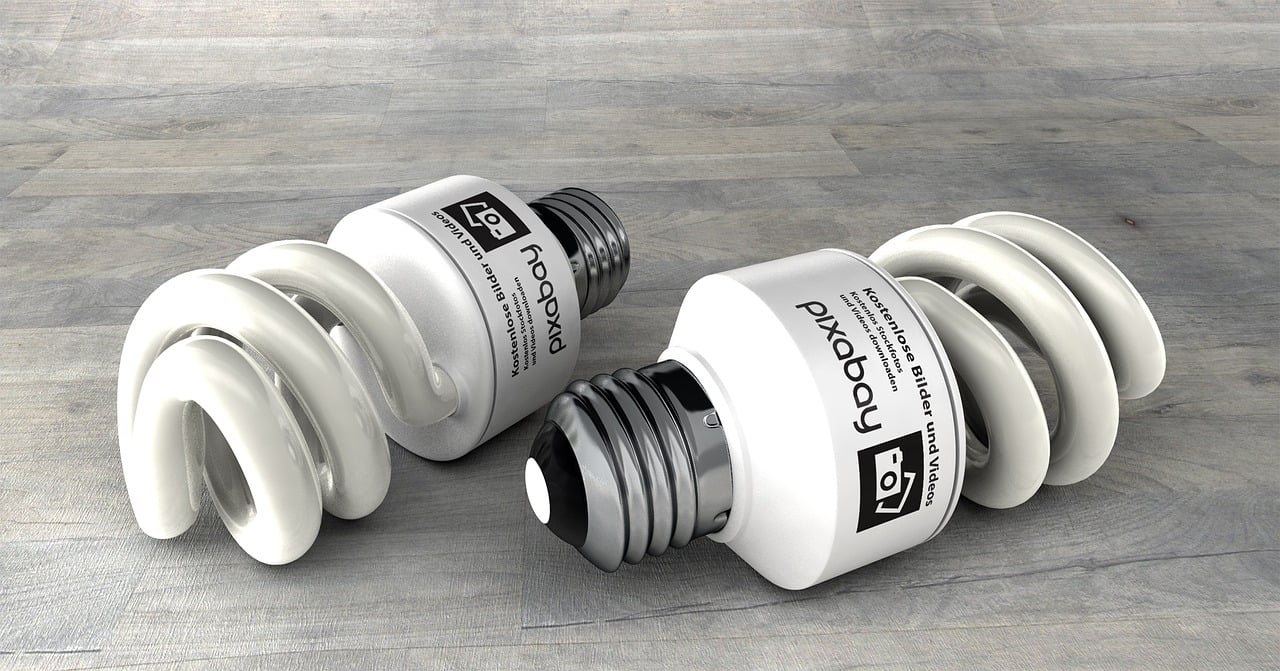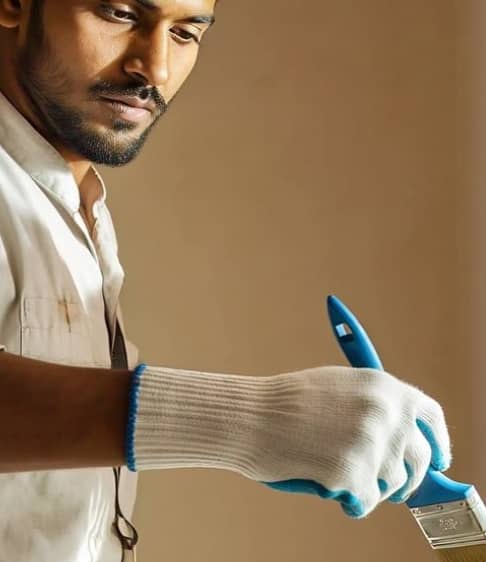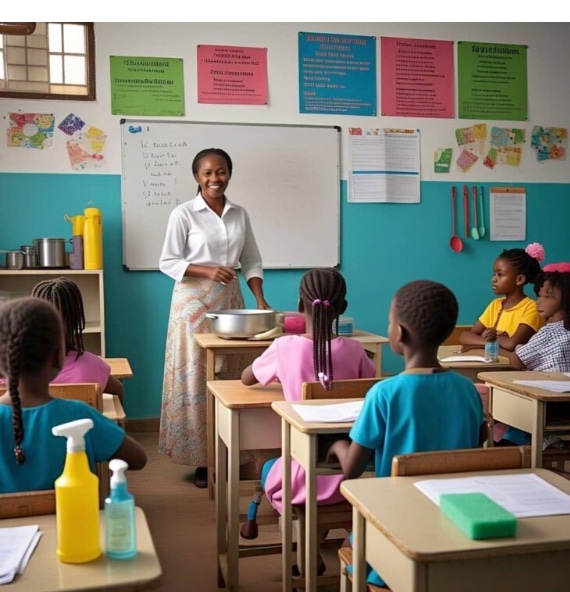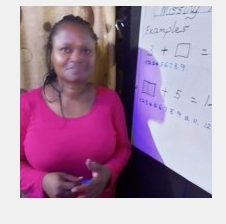Table of Contents
TogglePrimary 1 – Vocational Aptitude
Second Term – Week 2
Topic: The Hospital: Meaning, Career Professionals, Visitors, Equipment, and More
Duration: 40 minutes
Age Group: 5–6 years
1. Captivating Introduction (Sovereign Educator Style)
“Class, guess where I went last weekend?”
(Pupils shout random guesses: “Church!” “Party!” “Shoprite!”)
“No o — I went to the hospital to visit my sister who just had a baby! And guess what? The nurse wore white like an angel and smiled at me. But do you know who I saw next? The doctor with a long stethoscope — tapping and listening to the baby’s heartbeat. It felt like entering a real-life superhero house.”
(Class gasps!)
“Let’s explore what makes a hospital so special today!”
2. Behavioral Objectives
By the end of this lesson, pupils should be able to:
-
Explain what a hospital is.
-
Mention at least three workers in the hospital.
-
Identify people who visit the hospital.
-
List at least four equipment used in hospitals.
-
Say one reason hospitals are important.
3. Key Terms and Definitions
-
Hospital: A place where sick people are treated.
-
Doctor: A person who treats sick people.
-
Nurse: A helper who takes care of patients.
-
Patient: A person who is sick.
-
Injection: Medicine given with a needle.
-
Stethoscope: A tool doctors use to listen to your heartbeat.
4. Set Induction
Teacher: “Have you ever visited the hospital?”
(Pupils shout “Yes!” “No!” “I cried when they gave me injection!”)
Teacher: “Ahh! I used to run away from injections too — until I saw my mummy clap and smile after hers. She said, ‘Health is wealth, my child.’”
(Class laughs and gets curious)
5. Entry Behaviour
Linking to prior knowledge:
“Remember when we talked about vocations like the tailor and the teacher last term? Today, we will meet new helpers who don’t sew or teach, but they help sick people get well!”
6. Learning Resources / Instructional Materials
-
Pictures of a hospital, doctor, nurse, patients, and ambulance.
-
Toy stethoscope, syringe (without needle), face masks.
-
A mini role-play setup of a clinic (table, bed, white cloth).
7. Building Background Knowledge
Storytelling:
“When I was pregnant with my daughter, I visited the hospital every month. The nurses greeted me with smiles, the doctor asked me questions, and the lab scientist checked my blood. And when it was time to give birth, they helped me safely deliver a beautiful baby girl. Without the hospital, we might not have made it. That’s why hospitals are so important!”
8. Embedded Core Skills
-
Observation – identifying tools and uniforms.
-
Communication – expressing health-related experiences.
-
Critical Thinking – comparing hospital workers and their jobs.
9. Main Content
What is a Hospital?
A hospital is a place where people go when they are sick, injured, or need help to stay healthy.
People Who Work in a Hospital (Career Professionals):
-
Doctor – Treats sick people.
-
Nurse – Takes care of patients.
-
Pharmacist – Gives out medicine.
-
Lab scientist – Checks blood and urine.
-
Cleaner – Keeps the hospital neat.
-
Ambulance driver – Brings emergency patients quickly.
People Who Visit the Hospital:
-
Sick people (patients)
-
Pregnant women
-
Parents with children
-
Friends and family coming to visit
Tools/Equipment in the Hospital:
-
Thermometer – For checking temperature
-
Stethoscope – For listening to heartbeat
-
Syringe – For giving injection
-
Bed – For the patient to rest
-
Oxygen mask – For people who find it hard to breathe
-
Wheelchair – For patients who cannot walk
-
Ambulance – For carrying sick people quickly to the hospital
10. Classroom FAQ Discussion (15 Pupils’ Funny/Curious Questions)
-
“Is the injection sweet?” – “No dear, but it helps your body fight sickness.”
-
“Do doctors sleep in the hospital?” – “Some stay overnight for emergencies!”
-
“Why do nurses wear white?” – “Because white shows cleanliness and care.”
-
“Can we go to hospital if we break our toy?” – “No o! Hospitals fix people, not toys!”
-
“Can I be a doctor if I don’t like blood?” – “Yes! You can start with being a pharmacist or admin staff.”
-
“Is hospital like a hotel?” – “Hmm, not really. People rest there, but they are not on vacation!”
-
“Do all babies come from hospital?” – “Most do — it’s safe and clean.”
-
“Do doctors eat in hospital?” – “Of course! They need energy to help people.”
-
“Do hospitals have fans and TV?” – “Yes, some have cool waiting areas.”
-
“Can boys be nurses?” – “Yes o! Nursing is not for women only.”
-
“What if I cry during injection?” – “It’s okay to cry. But you’re still strong!”
-
“Why do hospitals smell different?” – “That’s the medicine and cleaning materials.”
-
“Can we play doctor-doctor at home?” – “Yes! But no real injections, please.”
-
“Why do doctors ask many questions?” – “They are finding out what’s wrong.”
-
“Can teachers work in hospitals?” – “Not as doctors, but they can teach patients too!”
11. Part A – 15 Fill-in-the-Blank Objective Questions (with Options)
-
A place where sick people go is called a ______.
a) Church b) Market c) Hospital d) School -
The person who gives us medicine is a ______.
a) Driver b) Pharmacist c) Teacher d) Tailor -
We sit on a ______ in the hospital.
a) Box b) Car c) Chair d) Fan -
Nurses wear ______.
a) Blue b) White c) Black d) Green -
A tool doctors use to check heartbeat is ______.
a) Thermometer b) Stethoscope c) Bell d) Spoon -
The person who cleans the hospital is a ______.
a) Cleaner b) Teacher c) Nurse d) Banker -
The thing used to carry sick people is an ______.
a) Airplane b) Ambulance c) Bus d) Taxi -
To give injection, doctors use a ______.
a) Spoon b) Pencil c) Syringe d) Cutlass -
A baby is born in a ______.
a) Market b) Bank c) Hospital d) School -
The hospital bed is for ______.
a) Dancing b) Sleeping c) Fighting d) Painting -
A hospital is kept clean by a ______.
a) Lawyer b) Cleaner c) Banker d) Police -
Nurses care for the ______.
a) Sick b) Rich c) Strong d) Police -
We use a thermometer to check ______.
a) Blood b) Water c) Temperature d) Height -
The hospital is important because it helps people get ______.
a) Sick b) Better c) Lost d) Late -
People who visit patients are called ______.
a) Fighters b) Visitors c) Actors d) Nurses
12. Part B – 10 Evaluation Theory Questions
-
What is a hospital?
-
Name two people who work in a hospital.
-
List three things you can find in a hospital.
-
Who gives medicine in a hospital?
-
Mention two people who visit hospitals.
-
Why do we go to the hospital?
-
What is a stethoscope used for?
-
What do nurses do?
-
Name one machine found in the hospital.
-
Why is it good to keep hospitals clean?
13. Assessment
-
Oral questioning
-
Pupil role-play: “Act like a nurse or doctor.”
-
Picture identification: “Show me the hospital tools.”
-
Drawing activity: “Draw a doctor and a nurse.”
14. Conclusion
“So class, when you see a hospital next time, what will you say?”
(Pupils shout: “That’s where people get well!”)
“Good! And if you want to be a helper someday — maybe a nurse or doctor — remember it all starts with love for people.”
Before we go, let’s listen to the story of Zara :
“Zara’s Visit to the Hospital”
Storytime:
Zara was just five years old when she woke up one morning with a funny feeling in her tummy.
She touched her head. “Hmm… it’s hot!” she whispered.
She didn’t feel like eating, and her smile was missing.
Her mummy noticed quickly. “Zara, you don’t look okay. Let’s go to the hospital.”
Zara sat quietly in the back seat as Daddy drove. They soon reached a tall building with the word “HOSPITAL” on it. Everything looked clean, white, and quiet.
As they entered, a nurse in white smiled at Zara and said, “Good morning, princess. You’re brave to come here!” Zara smiled a little.
Then a doctor came in, wearing a long white coat and a tool around his neck.
He said, “Hello, little friend. I’m Dr. Tunde. Let’s make you feel better!”
He used his stethoscope to listen to Zara’s heartbeat. “Lub-dub, lub-dub,” he smiled.
He checked her temperature with a thermometer, then gave her some medicine.
Soon, Zara began to feel better. “I want to eat rice now!” she said happily.
The doctor laughed. “That’s the magic of medicine and love!”
As they left the hospital, Zara looked at her mummy and said, “When I grow up, I want to help children like me. Maybe I’ll be a nurse!”
Mummy smiled and said, “You’ll be a kind one, my dear.”
10 Questions for the Pupils
-
Why did Zara go to the hospital?
-
Who was the first person Zara saw at the hospital?
-
What tool did the doctor use to check Zara’s heartbeat?
-
Why is it good to go to the hospital when you’re sick?
-
Have you ever been to the hospital before? What happened?
-
How did the nurse help Zara feel better?
-
What do you think would happen if Zara didn’t go to the hospital?
-
Do you want to work in a hospital one day? Why or why not?
-
What is your favorite part of the story?
-
If you were the doctor, what would you say to help a sick child feel happy?
Answer
1. Why did Zara go to the hospital?
Zara went to the hospital because she wasn’t feeling well. She had a high temperature and felt sick, so her parents decided to take her to see a doctor for help.
2. Who was the first person Zara saw at the hospital?
The first person Zara saw at the hospital was a nurse. She was wearing a white uniform and greeted Zara with a smile.
3. What tool did the doctor use to check Zara’s heartbeat?
The doctor used a stethoscope to listen to Zara’s heartbeat. The stethoscope helps doctors hear the sound of the heart and lungs.
4. Why is it good to go to the hospital when you’re sick?
It is good to go to the hospital when you’re sick because the doctors and nurses can help you feel better. They can find out what’s wrong and give you the right medicine or treatment.
5. Have you ever been to the hospital before? What happened?
(Answer will vary depending on each student’s personal experience. For example, “Yes, I went to the hospital when I had a fever, and the doctor gave me some medicine.”)
6. How did the nurse help Zara feel better?
The nurse helped Zara feel better by welcoming her with a smile, making her feel safe, and preparing her to see the doctor. Nurses help take care of sick people in many ways.
7. What do you think would happen if Zara didn’t go to the hospital?
If Zara didn’t go to the hospital, she might not have gotten better. The doctor and nurse helped her feel better with the right treatment, which wouldn’t have happened if she stayed at home.
8. Do you want to work in a hospital one day? Why or why not?
(Answer will vary. For example, “Yes, I want to be a nurse because I want to help people feel better” or “No, I want to be a teacher because I like teaching others.”)
9. What is your favorite part of the story?
(Answer will vary. For example, “My favorite part was when Zara said she wanted to be a nurse when she grows up” or “I liked when Zara started to feel better after the doctor treated her.”)
10. If you were the doctor, what would you say to help a sick child feel happy?
(Answer will vary. For example, “I would tell the child, ‘Don’t worry, you are going to feel better soon. I’m here to help!’”)
Related posts:
- Revision of First Term Topics Vocational Aptitude Primary 1
- Mechanic Workshop – Primary 1 Vocational Aptitude Week 3 Lesson Notes
- The Electrician Vocational Aptitude Primary 1 Second Term Lesson Notes 9
- The Painter: Vocational Aptitude Lesson Note for Primary 1 Second Term
- The Interior Decorator: Vocational Aptitude Lesson Note for Primary 1













